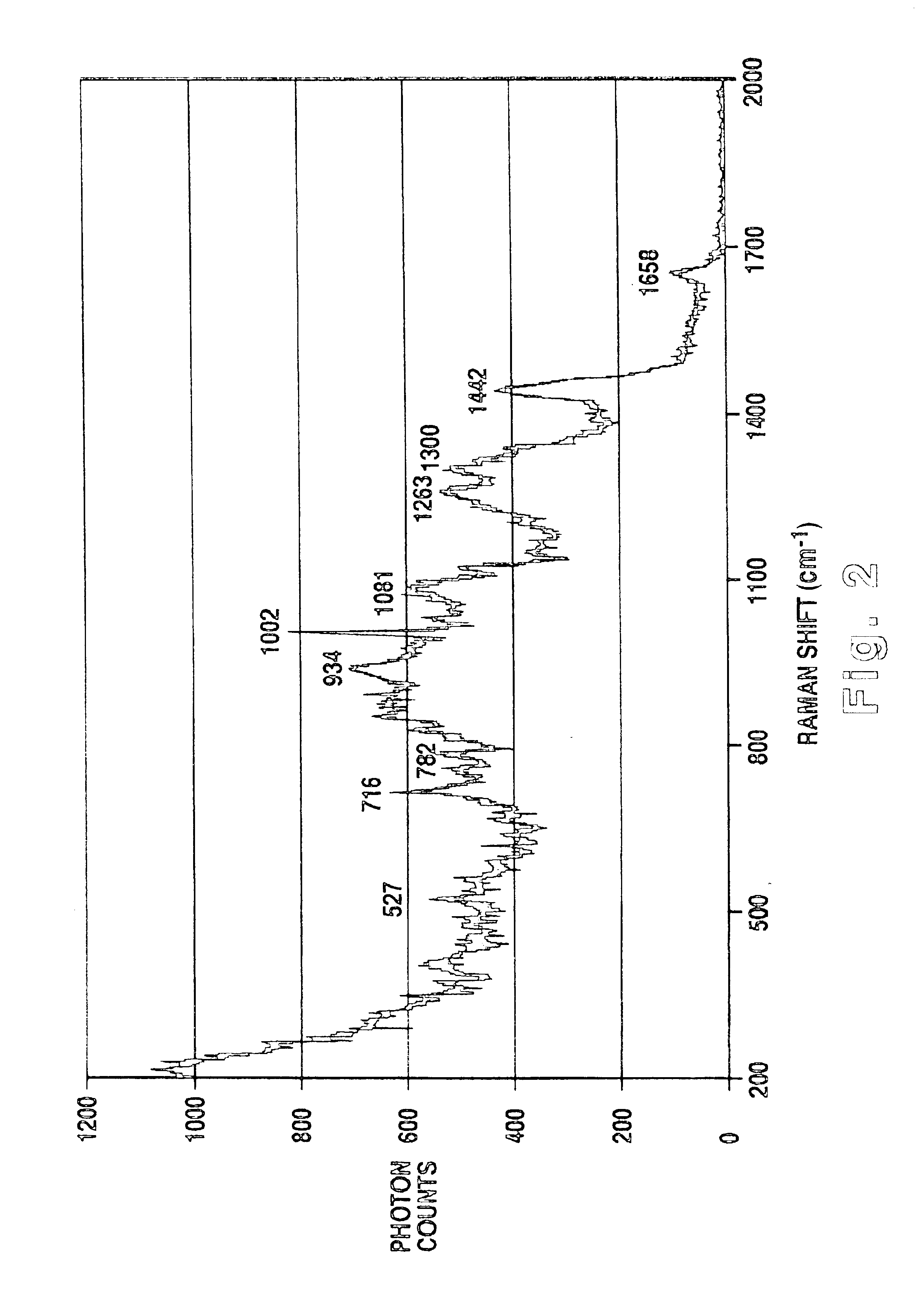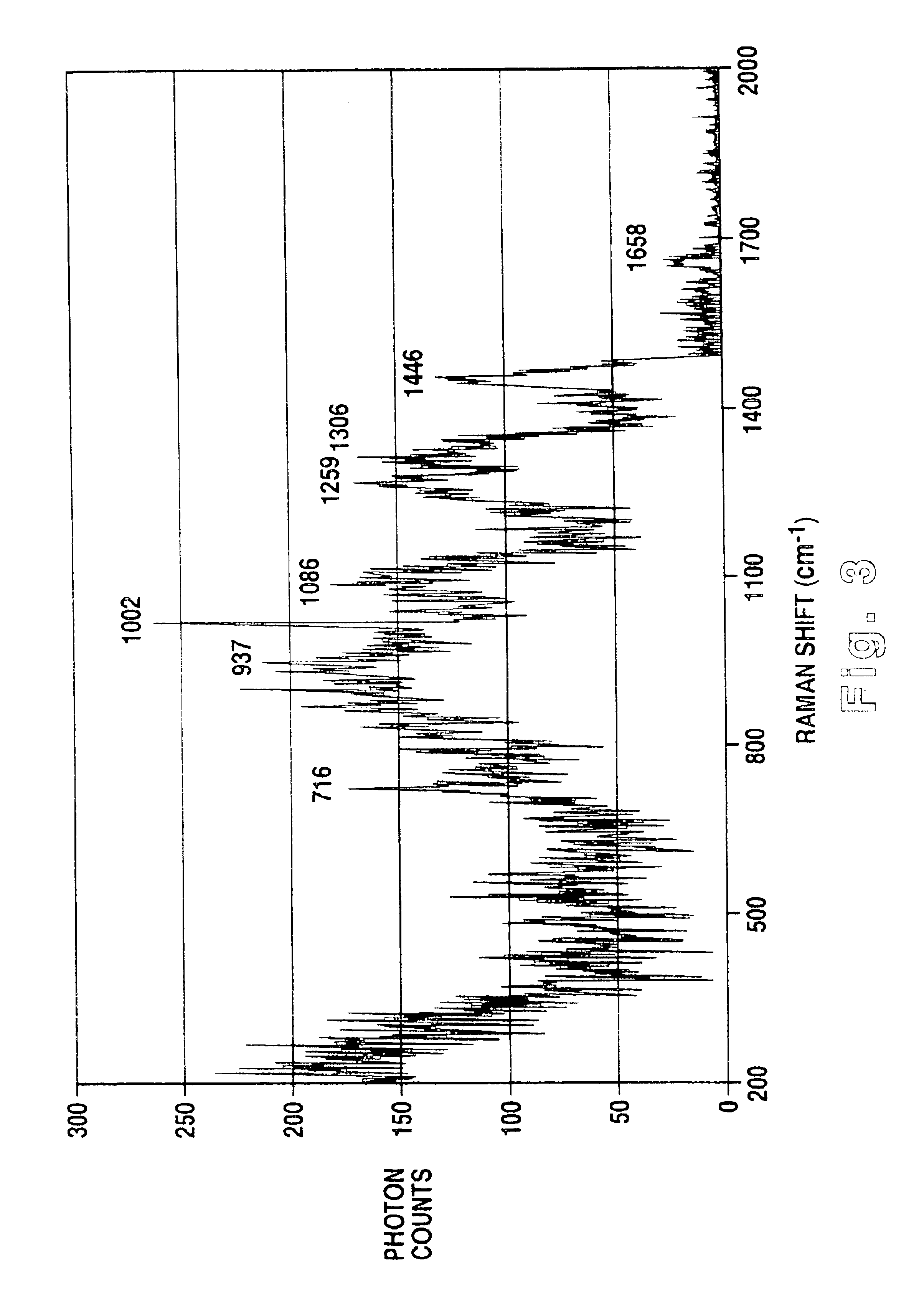Methodology of using raman imaging microscopy for evaluating drug action within living cells
a technology of living cells and imaging microscopy, which is applied in the direction of optical radiation measurement, separation process, instruments, etc., can solve the problems of resistance of some cells to drugs, pharmaceutical companies spending millions of dollars, and no cost effective way to understand the details of how these potential drugs work at the cellular level, so as to achieve convenient and cost-effective effects
- Summary
- Abstract
- Description
- Claims
- Application Information
AI Technical Summary
Benefits of technology
Problems solved by technology
Method used
Image
Examples
Embodiment Construction
[0037]FIGS. 1-7 represent the results obtained using Raman imaging microscopy in the study of interactions between the anticancer drug taxol and MDA435 breast cancer cells. While the present description speaks to this preferred embodiment, this technique could be used in the study of the interactions of any type of drug in any type of cell.
[0038]Raman imaging of the cell-drug interactions consists of several steps. First, the Raman spectrum of the drug is measured. From the Raman spectrum, the locations and relative intensities of the Raman peaks (or Raman modes) is determined. The combination of the multiple Raman peaks and their relative intensities provides a unique fingerprint of the drug. In the preferred embodiment, the Raman spectrum of the anticancer drug taxol was measured as illustrated in FIG. 1. From the spectrum the most significant Raman mode is 1002 cm−1.
[0039]Next, a Raman spectrum is obtained for the cells to determine their fingerprint and in order to ultimately d...
PUM
| Property | Measurement | Unit |
|---|---|---|
| time | aaaaa | aaaaa |
| height | aaaaa | aaaaa |
| pixel size | aaaaa | aaaaa |
Abstract
Description
Claims
Application Information
 Login to View More
Login to View More - R&D
- Intellectual Property
- Life Sciences
- Materials
- Tech Scout
- Unparalleled Data Quality
- Higher Quality Content
- 60% Fewer Hallucinations
Browse by: Latest US Patents, China's latest patents, Technical Efficacy Thesaurus, Application Domain, Technology Topic, Popular Technical Reports.
© 2025 PatSnap. All rights reserved.Legal|Privacy policy|Modern Slavery Act Transparency Statement|Sitemap|About US| Contact US: help@patsnap.com



